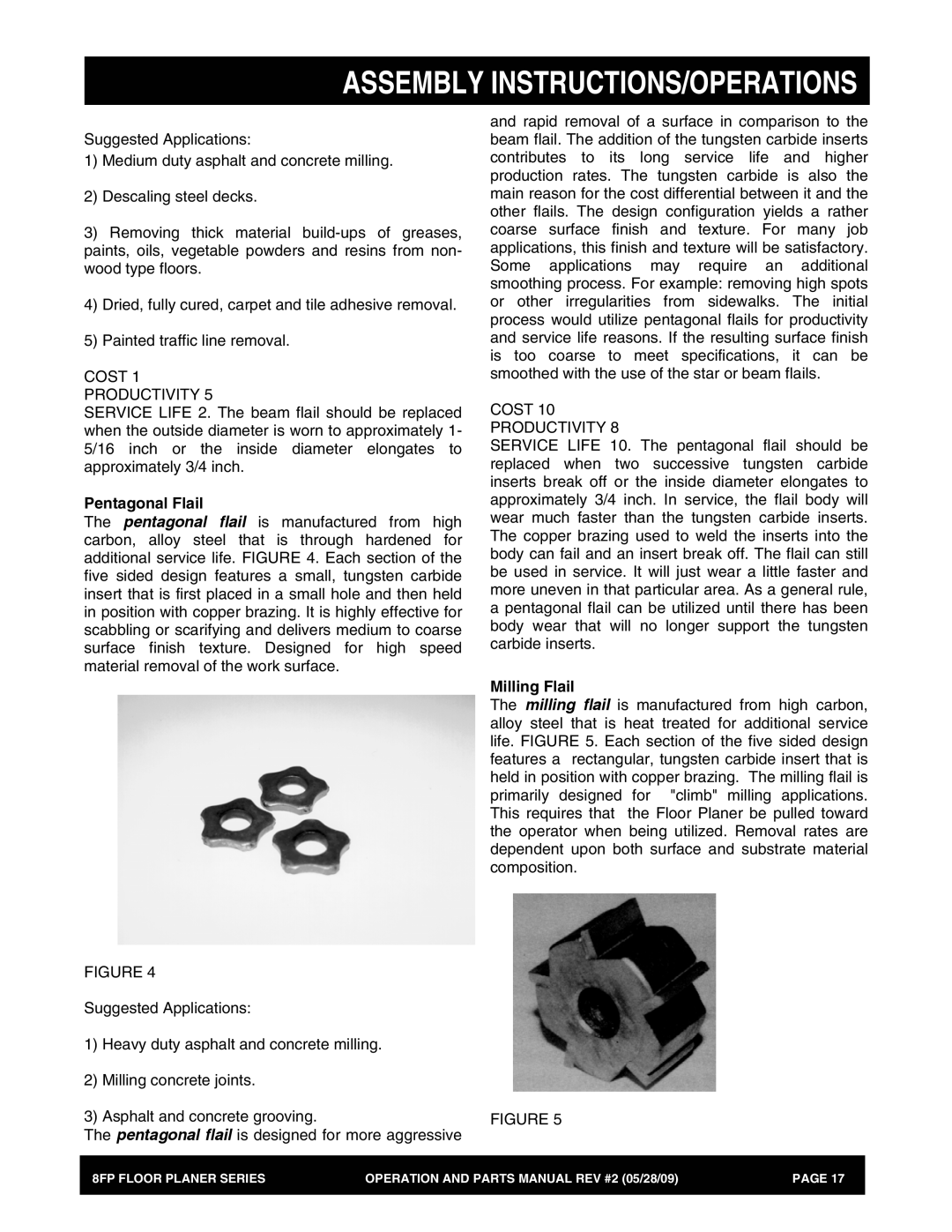
ASSEMBLY INSTRUCTIONS/OPERATIONS
Suggested Applications:
1)Medium duty asphalt and concrete milling.
2)Descaling steel decks.
3)Removing thick material
4)Dried, fully cured, carpet and tile adhesive removal.
5)Painted traffic line removal.
COST 1 PRODUCTIVITY 5
SERVICE LIFE 2. The beam flail should be replaced when the outside diameter is worn to approximately 1- 5/16 inch or the inside diameter elongates to approximately 3/4 inch.
Pentagonal Flail
The pentagonal flail is manufactured from high carbon, alloy steel that is through hardened for additional service life. FIGURE 4. Each section of the five sided design features a small, tungsten carbide insert that is first placed in a small hole and then held in position with copper brazing. It is highly effective for scabbling or scarifying and delivers medium to coarse surface finish texture. Designed for high speed material removal of the work surface.
FIGURE 4
Suggested Applications:
1)Heavy duty asphalt and concrete milling.
2)Milling concrete joints.
3)Asphalt and concrete grooving.
The pentagonal flail is designed for more aggressive
and rapid removal of a surface in comparison to the beam flail. The addition of the tungsten carbide inserts contributes to its long service life and higher production rates. The tungsten carbide is also the main reason for the cost differential between it and the other flails. The design configuration yields a rather coarse surface finish and texture. For many job applications, this finish and texture will be satisfactory. Some applications may require an additional smoothing process. For example: removing high spots or other irregularities from sidewalks. The initial process would utilize pentagonal flails for productivity and service life reasons. If the resulting surface finish is too coarse to meet specifications, it can be smoothed with the use of the star or beam flails.
COST 10 PRODUCTIVITY 8
SERVICE LIFE 10. The pentagonal flail should be replaced when two successive tungsten carbide inserts break off or the inside diameter elongates to approximately 3/4 inch. In service, the flail body will wear much faster than the tungsten carbide inserts. The copper brazing used to weld the inserts into the body can fail and an insert break off. The flail can still be used in service. It will just wear a little faster and more uneven in that particular area. As a general rule,
apentagonal flail can be utilized until there has been body wear that will no longer support the tungsten carbide inserts.
Milling Flail
The milling flail is manufactured from high carbon, alloy steel that is heat treated for additional service life. FIGURE 5. Each section of the five sided design features a rectangular, tungsten carbide insert that is held in position with copper brazing. The milling flail is primarily designed for "climb" milling applications. This requires that the Floor Planer be pulled toward the operator when being utilized. Removal rates are dependent upon both surface and substrate material composition.
FIGURE 5
8FP FLOOR PLANER SERIES | OPERATION AND PARTS MANUAL REV #2 (05/28/09) | PAGE 17 |
|
|
|
